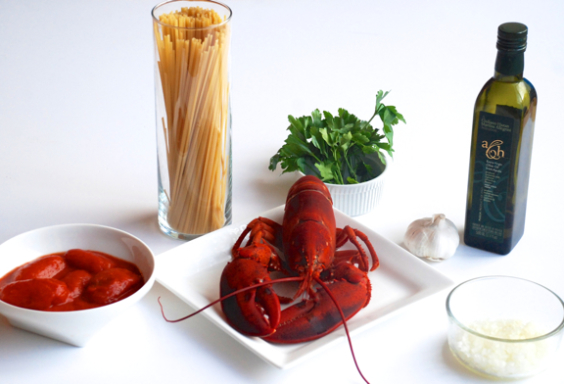 Some people have a knack for finding clothes, books, shoes, or toys over the Internet. In my family, my father-in-law has a gift for finding fabulous foods. Sometimes my in-laws, Victor and Marcella Hazan, get a hankering for the flavors and tastes that can only be found in Europe. Recently they wanted a really good prosciutto and, Victor, in true form found that he could order an entire Jamon Iberico online. When it arrived, he conceded that it was much to big for him and Marcella alone, so they graciously shared with us.
Some people have a knack for finding clothes, books, shoes, or toys over the Internet. In my family, my father-in-law has a gift for finding fabulous foods. Sometimes my in-laws, Victor and Marcella Hazan, get a hankering for the flavors and tastes that can only be found in Europe. Recently they wanted a really good prosciutto and, Victor, in true form found that he could order an entire Jamon Iberico online. When it arrived, he conceded that it was much to big for him and Marcella alone, so they graciously shared with us.

Prosciutto is the Italian word for ham. Prosciutto crudo, means uncooked ham and refers to an air cured, salted leg of pig. Its flavor is almost sweet, and when sliced and served properly, it is a succulent sensation in the mouth. The flavor varies according to the curing process and region of origin. San Daniele prosciutto is from Friuli and is distinctive because of the darker meat and the hoof that is left on the leg. However, the most famous prosciutto of Italy is Prosciutto di Parma. Mostly made in the town of Langhirano, outside of Parma, the making of these prosciutti is a craft handed down from generation to generation.

First the legs must be trimmed to perfection and washed. Then someone puts just the right amount of sea salt on them. Too much and the leg becomes salty, to little and it won’t cure. In olden times such prosciutti could only be made in the winter, but now, thanks to refrigeration, they can be made all year long. After salting, the legs are hung to dry for three days in a temperature controlled room. They are then taken to aging rooms with tall narrow screened windows that can be opened or closed depending on the outside temperature. In springtime, it was traditional to see some of these prosciutti wheeled out on drying racks so they could catch the sweet air. Now, in the times of regulation, the prosciutti, especially the ones exported to the US, must only dry inside the factory.

Testing to see if the proscuitti have aged properly is done with a small horse bone that looks like a long needle. The prosciutto is tested at about 9 months, but will normally age for two years.
Prosciutto can be served as an antipasto, alone or with long breadsticks called grissini. It also adds marvelous flavor to a pasta sauce and other dishes. Giuliano and I immediately cut some slices for sandwiches for lunch that day. Made with toasted bread and just a touch of butter, they were sandwiches fit for kings.
Similar cured hams can be found in Croatia, Serbia and also in the U.S., known as country ham. Spain is also famous for cured ham where one of the most famous is the Jamon Iberico.

Jamon Iberico is made from the black Iberian pig and comes from the south of Spain. The pigs are allowed to roam free in the oak forests and feed on bellota, acorns. There are different grades of these hams, which have to do with both the diet and for how long the meat is cured. The finest is called jamon iberico de bellota. It is very difficult to find and very expensive. The meat is very dark and there isn’t that much fat. More commonly found is Jamon Serrano, made from the white pig. Also delicious but not as expensive. One can also find Jamon produced in Portugal.

The best prosciutti are sliced by hand. The difference in taste from a just cut prosciutto and something that was cut a day ago is marked. Prosciutto dries out and the flavors are best when eaten immediately. To slice it, Giuliano reverently takes the piece out of its vacuumed sealed bag and carefully slices it neither too thin nor too thick using a very sharp knife. It looks like he is either at prayer or doing an operation, but the end result is fabulous.





One comment
I think good prosciutto is one of the things I miss most from Italy. I did some writing last year for a client who was importing Spanish hams to England and my mouth was watering all the time I wrote! Enjoy your Jamon while it lasts!